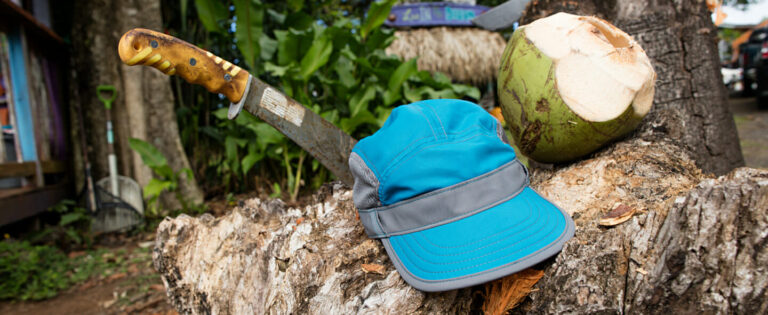
If you want to buy a backpack nowadays, you are suddenly faced with a huge number of different models and applications. There are daypacks, travel backpacks, trekking and touring backpacks, extra ski touring and climbing backpacks.
However, what is hidden behind all these terms and what kind of backpack do I need for myself? We will try to answer these questions in the following article.
BASIC
No matter which backpack you choose, the most important thing is always that the backpack fits well and is comfortable to wear. Otherwise it can quickly lead to pain or tension.
To carry the backpack as comfortably as possible, it is important that it is adjusted correctly. It must sit close to the body and compact.
Due to the different anatomies of men and women, some manufacturers offer extra women’s backpacks. This makes sense and should be considered when buying.
But now to the backpacks:
DAYPACKS

We start small with the so-called „daypacks“. As the english name suggests, these are backpacks for day trips to carry food, drink and clothes for one day. So these backpacks are quite small. They settle between 10 and 30 liters pack volume.
You can find them in all price ranges from 20 Euro to 200 Euro and more. Carrying system and hip belt are recommended if you want to use the daypack also for hiking. This is not absolutely necessary for a gentle stroll through the city.
Many daypacks can be folded very small, so they are easy to transport or store. Especially when travelling, this is highly recommended, because you don’t have to carry around a big backpack all the time.
In summary, you can recommend daypacks to everyone, because it is always handy to have a small backpack at hand, which can be used in many different ways. Here is an overview of the types of use:
- Everyday life
- City stroll
- Day hikes
- Additional backpack for travelling
TRAVEL BAGS
Travel backpacks are characterized by large volume as well as compact and robust construction. Most travel backpacks have an adjustable back length in order to fit exactly to the carrier. However, some manufacturers also offer different fixed sizes to choose from. They are available in all sizes from 40 liters to 110 liters.
Compared to trekking backpacks, travel backpacks have a cut similar to a travel bag, i.e. they are wider rather than deeper.

The pocket-like design is reinforced by side openings. This type is especially recommended for long-term travelers, since you can quickly access the complete main compartment.
Due to the size of these backpacks, they are all equipped with a carrying system.
Some travel backpacks have a removable daypack backpack integrated in addition to the main compartment, which can be fixed to the large backpack. So you only carry one backpack instead of two. As an example there are the backpacks, „Overland“ from Bach or the „Waypoint“ from Osprey.
But there are also other types of travel backpacks. Vaude for example offers with the Tecorail 80 a special highlight. This backpack can be used as backpack or as trolley. It has an integrated roll system with an extendable handle – and is therefore a perfect mixture between trolley and backpack.
Intended use:
- Travel
- Trekking
TOURING BACKPACKS, TREKKING BACKPACKS

The difference between tour/trekking backpacks and travel backpacks is not too big. With many tour/trekking backpacks there is an additional rain cape for absolute waterproofness, so that you can be on the way even with long rain of dry backpacks.
An important question to ask yourself: what kind of tour do I want to do? For a multi day tour with food I need a backpack with at least 70l, but for hut tours 40l are already enough.
With the large backpacks (70l+) it is recommended to pay attention to a head recess, so that you can move your head freely even with a full backpack. Another special feature of some of these backpacks are divided main compartments to accommodate the sleeping bag or clothes in the lower part. This has advantages, you can divide your stuff into 2 parts and both are accessible from the outside. However, this makes the backpack a bit heavier.
The carrying system is adjustable. However, even more importance is attached to comfortable carrying, because they were designed for long hikes and heavy luggage. For this purpose, there are backpacks with flexible hip fins to distribute the force evenly evenly during heavy passages. These hip fins also consist of several layers of foam to adapt as anatomically as possible.
In order to avoid excessive sweating on the back, a system is built into the backpack which pumps air through the existing foam by the movement of the running person and thus ensures air balance.
Most trekking backpacks are compatible with a hydration system.
Use of tour/trekking backpacks:
- Trekking
- Multi-day hikes
- Hut tours
SKI TOURING BACKPACKS

Ski touring backpacks are available in different versions. On the one hand, there are backpacks for high-altitude and multi-day tours, which have a large pack volume, up to 60 liters, and are equipped with many fastenings to attach helmet, skis, rope, ice axe and other things to the outside of the backpack.
The other big category are backpacks for day trips, which are smaller and can also be used for freeriding. Depending on the model, they are also available with many attachments for the above mentioned equipment. Many of these backpacks also have an integrated back protector to protect the back. They stand out due to their beautiful and stylish design with intelligent space allocation.
Almost all ski touring backpacks have a separate compartment to store shovel and probe. This compartment is easily accessible from the outside to have everything you need at hand in case of emergency.
As additional safety, both categories are available with avalanche airbags, such as Pieps‘ Jetforce, as well as avalanche backpacks made by ABS and Mammut.
In cooperation with Ortovox, ABS has developed a clever system that allows you to carry the ABS airbag with you at all times. However, the size of the backpack can vary depending on the tour. For this possibility the ABS backpack must be equipped with the M.A.S.S. system. With this system, you can „zip on“ the airbags with backpack pockets of different sizes. For example, the Ortovox Free Rider 24 ABS Avalanche Backpack can be used as a basic frame.
You can find more information about avalanche backpacks here.
Intended use:
- Ski-/High tours
- Freeriding
CLIMBING BACKPACKS

There are again several categories of climbing backpacks. It is important to consider what you want to use it for, whether for sport climbing or for multi-pitch climbing. Of course you can use any backpack for anything, but there are certain advantages and disadvantages.
Backpacks for sport and indoor climbing, like the Black Diamond Shot or the Mantle, are built like bags. They have a carrying system. However, they do not have a lid pocket and can be opened to their full length. This allows a good overview in the backpack. In addition, extra loops are sewn on the upper end to which the exes are attached so that they do not go around in the rucksack. The rope is tied to the outside of the rucksack.
There are also climbing backpacks like the Black Diamond Demon or the Edelrid Cragbag II, which are backpack and rope bag in one. Both have a tarpaulin for the rope attached to the backpack. So the only question is where to put warm clothes and food.
Haglöfs – Roc Rescue 40 – backpack
Climbing backpacks guarantee sufficient freedom of movement
Another category are multirope length backpacks. These backpacks are designed for maximum freedom of movement. The center of gravity is set so that it has as little influence as possible on the climber’s balance. For this reason, they are cut narrowly and fit tightly to the body. They also have removable hip fins, as these are often disturbing. The carrying system is flexibly constructed so that the rucksack can follow complex movements. Anatomically shaped shoulder straps also increase freedom of movement.
The pack volume varies between 12 and 35 liters. The small versions (12l) resemble light daypacks, the large versions are more like trekking backpacks.
The third category is the haulbags. They are for all those who want to make long tours in the wall or who have to climb technically and therefore have to pull material behind them. The Haulbags are like robust sailor bags, but they have a removable carrier system. This allows you to carry the Haulbag to the wall, and when the carrier system is removed, the Haulbag cannot get caught anywhere on the wall when pulling material behind it.
Intended use:
- Sport Climbing
- Indoor climbing
- Multi pitch tours
TRINKING BAGS

Drinking backpacks are backpacks that are only designed to hold the hydration system and maybe a few bars. These backpacks are very popular with trail runners, because they are usually very, very light and are almost unnoticeable or annoying even when jogging.
The drinking backpacks are also available in versions with more packing volume. However, they can then be called daypacks, as there are no striking differences.
You can find more details in the Buying advice for a drinking backpack in our online store.
Intended use:
- jogging/trail running
- Everyday life
- Hikes
If you still have questions, our customer service will be happy to help you. Daniel is our backpack expert here. You can reach him under the number +49 (0)7121/70 12 0 or by e-mail.
There is a lot going on in the climbing and outdoor sector. New products are invented, existing ones are revised or improved and we also learn a lot every day. And of course we want to pass on our knowledge to our customers. Therefore we regularly revise our articles in the base camp. So don’t be surprised if after a few months a few things are different. This article was last revised on 03.03.2016.



